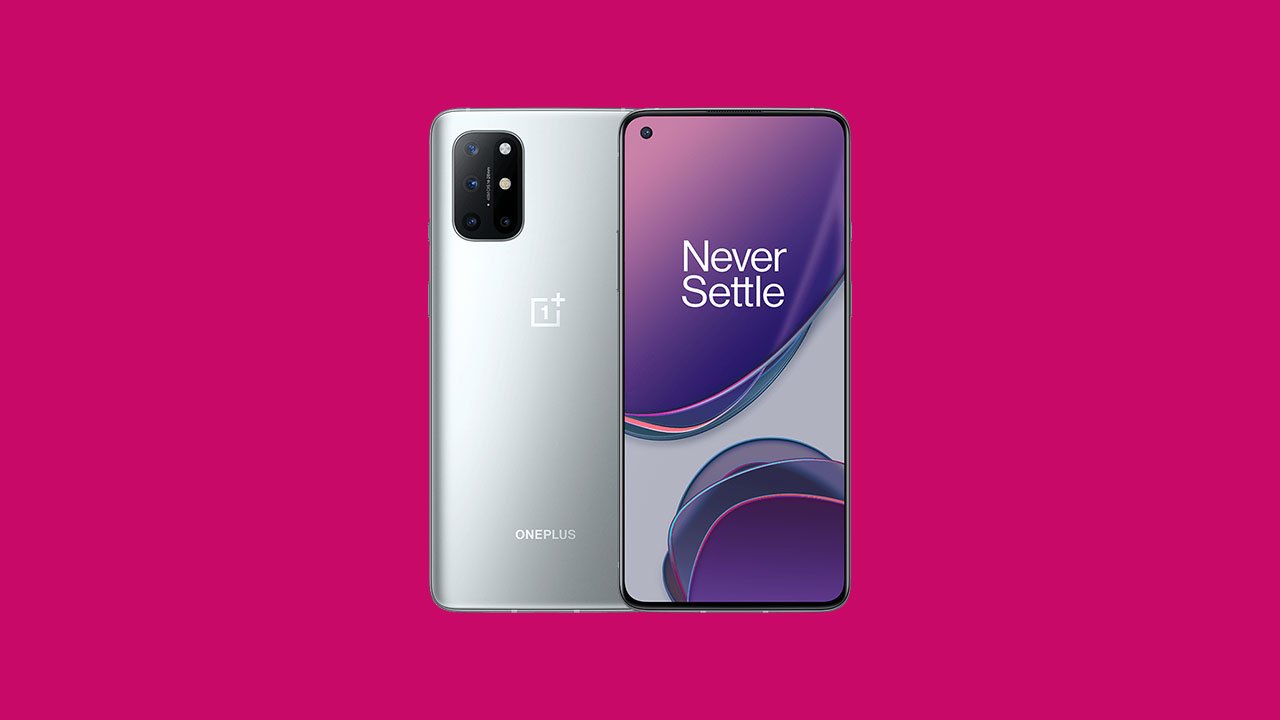Smartphones continue to improve year over year, and 2020 was no exception. With all major brands pushing the envelope on concepts and design, delivering some of the most exciting phones to date. While not everything was a hit with consumers, it was the year foldable phones made a major splash onto the scene, along with faster displays, and real advancements in camera tech. From major brands such as Apple, Google, LG and Samsung they have looked to try new things, and deliver the best possible smartphones to date.
With so many amazing options, CGMagazine selected the best and most exciting smartphones of 2020. From unique offerings, to amazing budget devices, the world of smartphones did not disappoint and there is something for every budget and type of user. We only included phones we had real world testing with, so ones we only previewed, or saw at a trade show sadly were not in the running.
Apple iPhone SE – 9/10

Phones are always a hard thing to buy for people. It can be hard to know what is the best choice that will offer performance, while not breaking the bank and keeping the design and style they already love. This is where the iPhone SE fits into the picture. This new device brings all the features we have come to expect from the latest iPhones while offering a phone that keeps the classic style and size. Not everyone wants a massive smartphone or new ways of navigating the OS, and the fact the iPhone SE is around $400, is the icing on the cake.
The iPhone SE 2020 is potentially the best budget smartphone you can buy. It is premium-feeling throughout, offers amazing performance, a very good camera, and to put it simply, outclasses almost all the similarly priced Android phones by a mile, providing you don’t want 5G that is.
If you know someone who loves smaller phones and wants the best phone possible in a small package, the iPhone SE 2020 is the phone to buy. It looks great, feels snappy to use and all comes in a sleek, well-designed package. This is the phone that puts other budget phones to shame, and it is a great gift for anyone on your list.
LG V60 5G ThinQ Dual Screen – 8.5/10
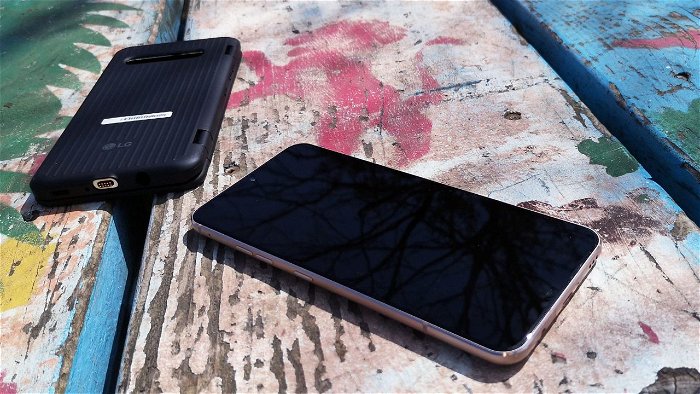
The LG V60 ThinQ 5G features the Snapdragon 865 processor with 8GBs of RAM and 128GBs of built-in storage, placing the V60 firmly at the top with other flagship Android devices. Those worried about running out of space (or those who may be accustomed to Apple products) can rest knowing that the V60 comes equipped with a micro-SD card slot, giving those who require extra room the option to upgrade. With the LG V60’s beefy 64megapixel rear-facing camera, additional storage is a welcome bonus, especially when shooting 8K video. Photos shot on the V60 look great, particularly when shot in bright settings or up close on subjects that have a lot of texture or fine detail.
Photos shot in low-light settings still look fairly decent and thanks to the inclusion of a pixel-binning technique that grants brighter exposure, the V60 can more than make do even under poor settings. Like the G8X and some of LG’s previous flagships, the V60 also features an ultra-wide 13-megapixel camera that can be used to take sweeping shots that have a real sense of breadth and depth, not possible on a traditional lens. The inclusion of the second screen also allows users to prop the phone up or even use it as a means of getting more exciting and stable shots, something unique to LG’s dual-screen offerings. Overall, the V60 offers a robust set of photo and video capabilities, although nothing that particularly standouts, when compared to other flagship devices that feature similar specs.
The LG V60 will not be a phone for everyone unless you happen to be someone who doesn’t own a whole lot of devices and just want one smart device to rule them all. The LG V60 offers both high specs, engaging and vivid displays and a powerful 5000mAh that can get you through your day without the need to charge, even when consuming large amounts of media.
Samsung Galaxy S20 FE – 9/10
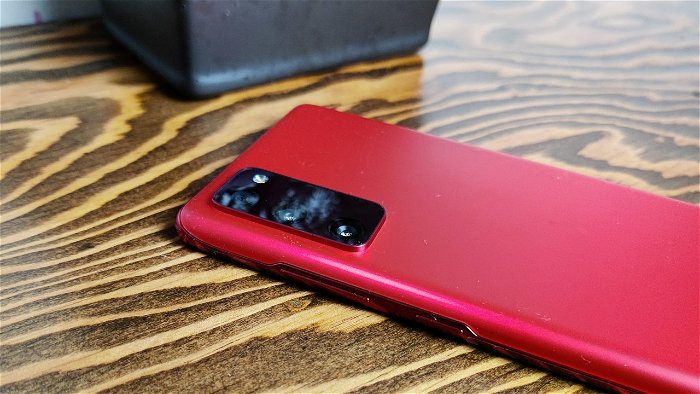
On the surface the Samsung Galaxy S20 FE feels like a response to the phones of OnePlus and other Chinese manufacturers. With so many of them looking to trim the fat to hit price targets, it makes phones like the Galaxy S20 Ultra feel like luxury items we can only dream of. But Samsung, being the agile smartphone giant it is, used these lessons and, in record time, built a new iteration of the S20 that feels modern, powerful, and stylish; while cutting features that most fans do not need.
The S20 FE features a 1080 x 2400 pixel 120Hz Super AMOLED screen that is simply stunning to look at, especially for a phone at this price point. It feels responsive and smooth with animation and video looking sharp, clear and crisp. It is not as vibrant or clear as the panel seen on the S20 Ultra, but it comes close, making it easy to experience with it never feeling budget or like a massive step down for most people.
Under the hood, the Samsung S20 FE feels snappy, but does lack some of the performance you will find in the more “flagship” variants of the range. Samsung opted for a less powerful, more power efficient option in the Snapdragon 865 SoC with 6 GB RAM. With this you will be able to play most of the modern Android games, including Fortnite, PUBG or even Call of Duty Mobile without any issue with stuttering.
The Camera on the Samsung S20 FE fared well. It does not have the monster camera specs other phones in the lineup offer, but overall it offers a good balance of features and processing that should make the majority of people happy. Shots feel crisp, vibrant and clear, and while the “Samsung processing” feel is alive and well in the FE, it should not be overpowering for most people and offers good photos overall.
At the $949 price point, the Samsung S20 FE 5G is a great offering from the Korean tech giant. It delivers in all the areas we have come to expect from Samsung, while cutting the right corners to hit a price that is competitive and exciting. With the Pixel 5 launching soon at $799 and other devices clawing for that mid-range market, Samsung have knocked it out of the park, and found the perfect balance between flagship features and midrange appeal.
OnePlus 8 Pro – 9.5/10
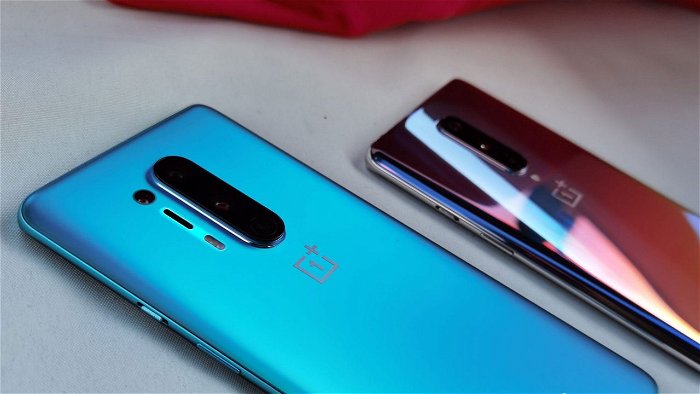
The OnePlus 8 Pro is the best thing. With one of, if not the best screens on the market, a very capable camera suite, and the fastest wireless charging on the block, the OnePlus brand has finally poised itself as a direct competitor to the big dogs in the game—which is damn good considering it is now priced similarly to its contemporaries.
The OnePlus 8 Pro comes with a 6.78” Fluid AMOLED capacitive touchscreen with a 120Hz refresh rate and 1440 x 3168 pixels (~513 ppi density) with HDR 10+ support. For you shutterbugs out there, we’ve got quite the setup on the back of the phone (and a nicely centred camera bump) with a 48 MP Main Camera featuring a Sony IMX689 sensor, an 8MP 3X Telephoto camera with 30X Digital Zoom, a 48 MP Ultra Wide Angle camera with a 120° FOV, and a 5MP “Color Filter Camera”. There is also the 16MP selfie camera for the social media crowd.
As for memory, storage, and processing power, the OnePlus 8 Pro comes in two models: 128GB storage with 8GB LPDDR5 RAM and 256GB 12GB of LPDDR5 RAM—which OnePlus claims will boost memory speeds by 30 per cent while lowering power consumption by 20 per cent. Powering this monster is a Qualcomm SM8250 Snapdragon 865 and an Adreno 665 GPU running the surprisingly light OygenOS Android system. The X55 5G modem ensures future-proof 5G connectivity with more bands than you can shake a stick at and super-fast download speeds along with the Wi-Fi 6 technology. And finally, keeping all this crazy technology running is a 4510 mAh battery with Warp Charge 30T (5V/6A) and Warp Charge 30 Wireless charging tech.
The OnePlus 8 Pro is, clearly, the best OnePlus phone you can buy, with all the bells and whistles of the competition and a few big advantages—namely the unbelievably fluid and gorgeous 120Hz QHD+ screen and the super-fast charging. The camera is better than anybody realistically needs from a phone, and while it is a bit gimmicky I am a huge fan of the Super Macro Mode. The hefty RAM and 5G/Wi-Fi 6 connectivity means no issues with watching Ultra-HD videos and I didn’t experience any noticeable slow-down when streaming that wasn’t due to my generally crappy home WiFi. Despite the slow price creep over the years, it’s still cheaper than the competition at the very top-level of the market, and I remain continually impressed with what OnePlus offers.
Samsung Note 20 Ultra – 9.5/10
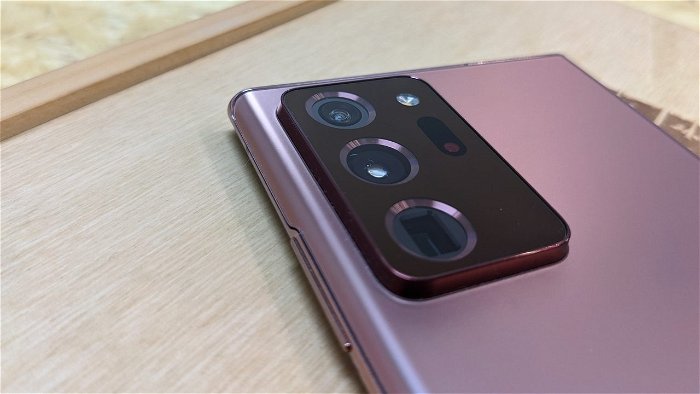
Samsung’s Note range has never been a slouch when it comes to design or features, and 2020’s Note 20 Ultra is no expectation. The matte metal and curved glass design give the Note 20 Ultra a feel of fine jewelry or a precision-crafted watch. Even at its large size, the materials used make it easy to hold, all while looking stylish as you check messages, play games, or snap a photo. And thanks to the IP68 water and dust resistance, you don’t need to worry about pulling it out in the rain to check that urgent email.
The Note 20 Ultra features a 6.9-inch AMOLED 120Hz display and has Gorilla Glass Victus ensuring you won’t see any major scratches in everyday use. With a resolution of up to 1440 x 3088 and HDR10+ support, the display is stunning to both look at and use. It manages a solid balance of speed and brilliance, making it one of the more pleasing smartphone screens of the year so far.
Under the hood, the Samsung Note 10 Ultra is powered by a Qualcomm Snapdragon 865 Plus SoC with Adreno 650 graphics and 12GB RAM, 128GB of storage, with an option to add up to 1TB more via SD card. This is by far one of the most powerful Smartphones to hit the mainstream market in 2020, with the included SoC and 12GB RAM there are relatively few apps or workflows that could ever come close to bringing this smartphone to its knees or even cause any noticeable slowdown. And thanks to the most recent Qualcomm chipset and 5G support, should your carrier support it, you can take advantage of increased download speeds, but it will dramatically reduce your battery, so keep that in mind when purchasing.
The back of the phone features a 108MP f/1.8, 26mm main shooter, a 12MP f/3.0, 120mm periscope telephoto camera with 5x optical zoom, with the option for 50x hybrid zoom, and finally a 12MP f/2.2, 120˚, 13mm ultra-wide, with a 10MP f/2.2, 26mm front-facing camera that can be used for face-unlock if you are so inclined.
Samsung has built the Ferrari of smartphones, delivering all the power and features most consumers could ever want, all in a stylish, refined package. While I liked most of what the S20 Ultra had on offer, the Note 20 Ultra surpasses it in almost every way. Samsung has managed to improve on what was already a great offering, making the Note 20 Ultra one of the best phones I have ever used. With a great camera, solid specs and an overall look and feel that is second to none, if you want the best creator phone on the market, look no further than the Samsung Note 20 Ultra.
Google Pixel 4a – 9/10
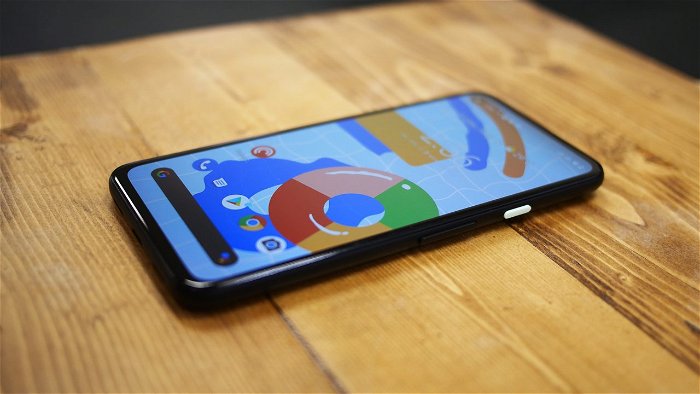
First and foremost, the Pixel 4a is striking for how it is so unlike other Pixel devices. The 4a feels modern, taking design concepts from the best in the Android space, that, while feeling and looking less “premium” at first glance, feels great to use, and once you get over the changes, has a unique style all its own that sets it apart from the crowded midrange space.
Looking at the screen, you will find a 5.81-inch FHD+ (1080×2340) display with almost no bezel as you look around the phone. Unlocking other offerings, Google has opted for a hole-punch display giving the camera the top left of the screen. It is a clean and relatively unobtrusive solution and it gives the Pixel 4a a very minimal modern look.
Since this is a mid-range device, it is only fitting Google has powered it by the Qualcomm Snapdragon 730 SoC and 6GB RAM. While it will not be the most impressive in the Snapdragon range, the Pixel 4a has enough power to deal with most smartphone tasks. While I did see some minor stuttering moving between larger apps, or in more intensive games such as Fortnite and Call of Duty, most daily phone tasks were done with ease.
Jumping over to the camera, we will find a relatively modest 12.2 dual-pixel f/1.7 aperture, 77-degree FOV camera, with an 8-megapixel f/2.0 selfie camera on the front of the phone. On paper, these cameras should not be able to perform compared to the likes of Samsung, or Apple, yet, thanks to the software at the core of Pixel phones, the camera managed despite the hardware on offer.
The Google Pixel 4a is a great offering and at the $479 CAD it is an easy recommendation for anyone looking for a new phone, or wanting the latest and greatest android has to offer but doesn’t want to break the bank to do so. If you are new to Android, or just want to see what Google can offer at under $500, the Pixel 4a will not disappoint.
TCL 10 Pro – 8.5/10
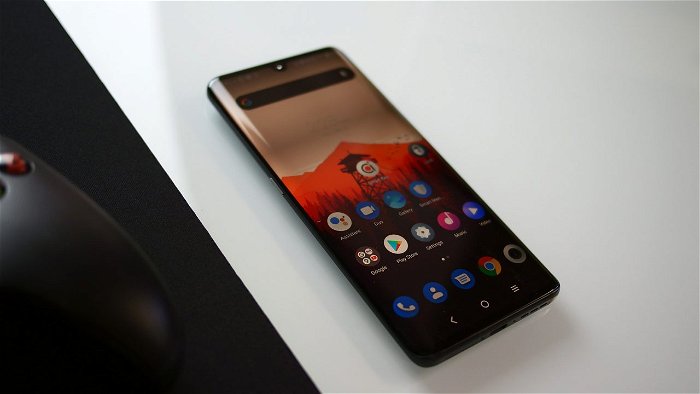
The TCL 10 Series of phones come in two flavours, the “flagship” 10 Pro and the lower end, TCL 10L. Both these phones are stylish offerings, delivering a bevy of features, a stunning screen and a range of cameras all for a sub $1000 price point. Even the flagship 10 Pro only costs $700 CAD in Canada, or $380 USD, making them very enticing for the budget-conscious phone buyers looking to make an upgrade.
The front screen offers up a TCL made 6.47-inch AMOLED Full HD+ (2,340 x 1,080) with a 19.5:9 aspect ratio and a 398 ppi. It is a stunning screen to look at with rich blacks and vibrant colours. Colour representation was good throughout my experience with the phone, and the overall impression is that the screen makes the TCL 10 Pro feel like a much more expensive offering than it actually is. Especially with the waterfall sides of the display and the crisp picture the 10 Pro offers.
Under the hood, the TCL 10 Pro features a Qualcomm Snapdragon 675 with Adreno 612 graphics and 6GB RAM. This is Qualcomm’s answer for performance and efficiency making it the ideal choice for the TCL 10 Pro. The phone powers through everyday tasks and the efficiency of the SoC means you won’t be screaming for the charger halfway through the day. Granted, it does not have the power behind it compared to the 800 Range of SoC’s but for most people, this is more than enough. It can play games, browse the web, and look at videos on the go with ease, with little lag or stuttering.
Beyond this fact, the 10 Pro managed to capture images without noise; overall clarity felt good, and for the price, the camera felt solid for most people’s needs. There are some amazing cameras now available at the mid-range and this is one area I would like to see TCL improve with either a software update or on future phone offerings.
The TCL 10 Pro is a stunning device that, in some ways, feels like a tremendous value and, in others, feels hampered by software choices. Visually the 10 Pro is a stunning device with a build quality that puts it up with some of the best phones out today, but clunky software and disappointing camera keep it from greatness.
Google Pixel 4a 5G – 8.5/10
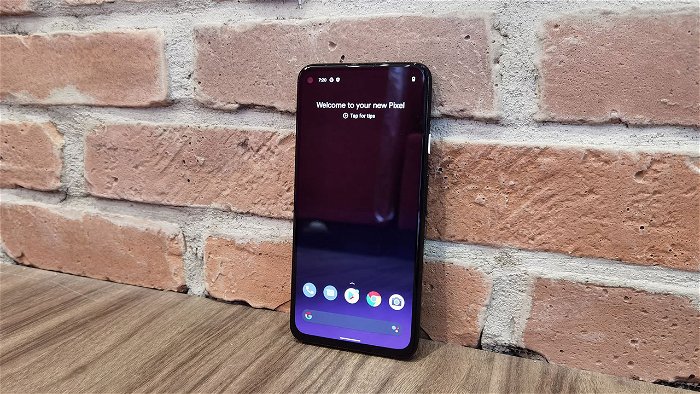
You know it’s fall when phones start dropping faster than the leaves in the park. This month Google is launching their Pixel 4a 5G in Canada which is an incredibly cheap (relatively speaking) phone that is surprisingly good. If you’re looking for a phone that is easy on the wallet, has a headphone jack and a solid camera, look no farther than the Google Pixel 4a 5G.
I don’t know how google did it, but they managed to put a 6.2-inch OLED screen on this device and still keep the cost down. This is the largest Pixel that Google is releasing this year. The screen is only 1080p and doesn’t have a massive refresh rate but it’s still good. The colors are vibrant and I had no problem seeing the screen when walking around outside in the cold fall sun.
The camera is the same camera you will find in the Pixel 5. The main camera is a 12-megapixel sensor, and a new 16-megapixel ultrawide sensor. The selfie camera is 8 megapixels and is decent enough. This is a really great camera considering the price. It’s not the best in night mode but I was impressed with what it did pull off in Night Sight mode. Pictures in the daylight look fantastic and I’m more than happy with the results. The videos are ok, but they don’t hold a candle to my Huawei or iPhone devices.
Let’s be real with each other valued reader. Most flagship phones on the market are just not worth it. They are overpriced and have more buzz words than they do features. We don’t all need top line phones. Most of us would be perfectly fine with a phone such as this. This has everything you could ever need, a beautiful display, a fantastic camera and solid performance. For the price I’m blown away. It’s not sexy, but it does the job. Did I mention it also has a headphone jack?!
OnePlus 8T – 9/10
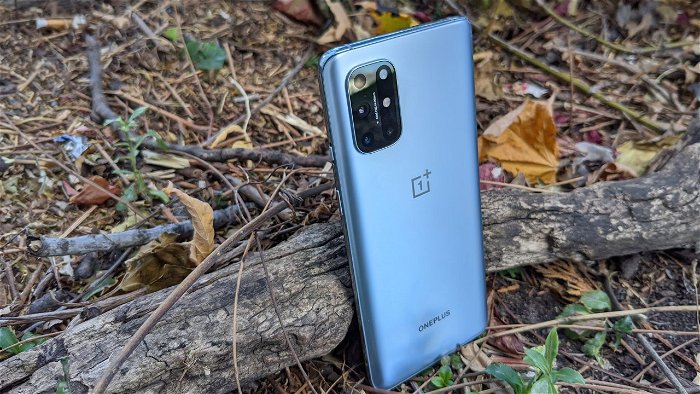
The OnePlus 8T is a brilliant entry in the OnePlus portfolio—with a premium feel, great features and enough improvements to make the investment worthwhile. While I would not recommend anyone who just purchased the OnePlus 8 or 8 Pro give this one a go, it is a great reason to invest should you not have upgraded when the 8 range first hit the scene.
The 120Hz FHD+ AMOLED screen is one of the best screens I have seen on a smartphone this year. It is vibrant, clear and snappy. Viewing angles are topnotch, making the screen on this phone great for anything from web browsing, productivity, and especially gaming. The 120Hz screen makes everything feel more fluid, especially in games that can utilize the refresh rate to its fullest. Blacks are deep and clear, with colours that feel vibrant, and pop even when viewed in sunlight. Even the auto brightness seems to work as expected, delivering an all-around fantastic screen-viewing experience.
The OnePlus 8T’s camera array utilizes a 48-megapixel sensor, 16-megapixel ultra-wide, 5-megapixel macro, and 2-megapixel monochrome sensor. I wholeheartedly love the selection of sensors on offer with the 8T, and while many would demand a telephoto camera on the device, even when I have the option, I will avoid using it, opting to move closer to the target when possible. While in theory a telephoto lens sounds like a great addition, the results from any of the offerings I have seen on competing smartphones make it more of a gimmick that goes unused past the first week with the device.
When it comes down to it, the OnePlus 8T is a fantastic smartphone, and had the OnePlus 8 and OnePlus 8 Pro not launched a mere six months ago, would be an easy recommendation to anyone wanting for the latest and greatest from OnePlus. As it stands, it is a stunning iteration, and a great step forward.
Huawei Mate 30 Pro – 8.5/10
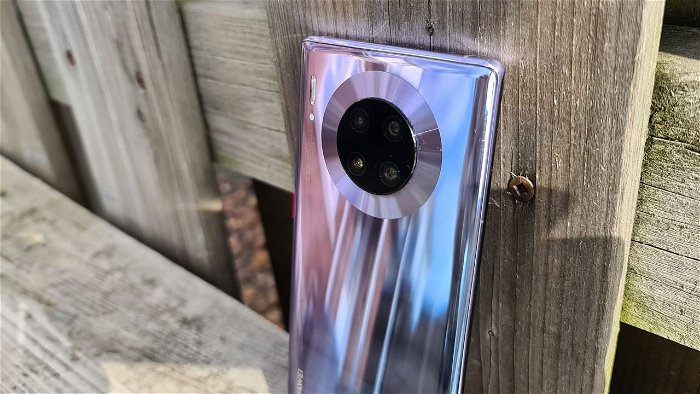
The Make 30 Pro is one of the most premium-feeling smartphones I have used in the last year, and yes this includes the iPhone and Samsung Galaxy. The clean, lines and crisp waterfall display make it stunning to look at, and the built quality makes it feel fantastic in the hand. Even without turning the phone on, the attention to detail can’t be overlooked.
Under the hood, the Huawei Mate 30 Pro packs a 4,500mAh battery, 8GB of RAM, 256GB of storage, a new Kirin 990 SoC chip, a 6.53-inch waterfall 1176 x 2400 OLED Gorilla Glass 6 screen with a pixel density of 409 PPI, all enclosed with premium feeling glass and metal. As with most modern smartphones, the Mate 30 Pro has it’s IP68 rating, and is relatively scratch resistant, at least from a usage testing standpoint. Beyond that, you will find a USB-C port on the bottom, along with a mono bottom-firing speaker, and a power button on the side.
Looking to the back of the Mate 30 Pro you will find the new round camera array. This striking new layout is reminiscent of a point and shoot camera, and makes for a great look should you be nostalgic for the days of the small digital cameras we all used to carry around. Beyond the camera area, the phone feels sleek, stylish and minimalistic. It offers enough new while still giving a familiar feel making it easy to pick up, use and get comfortable with.
If you were a fan of what the P30 Pro has to offer, you will be even more impressed with how the Mate 30 Pro tackles photography. Leaving behind the periscope zoom lens, the Mate 30 Pro now offers a 40MP wide-angle camera that stands as the default lens on the phone. While this does come at a cost of only having a 3X zoom, in this critic’s opinion, it is a fair and sensible tradeoff.
While Google and Android normally walk hand in hand, world events have forced Huawei’s hand, and the Mate 30 Pro in its present form is the result. The phone is one of the best Android smartphones currently available, and offers an uncompromising design and feel making it stunning to look at and use. While it is not for everyone, if you can live outside the Google ecosystem, the Mate 30 Pro is simply an excellent offering, that could only be made better.
